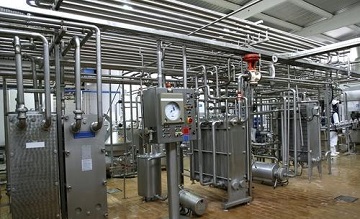Stainless Steel Instrumentation Tubing
Instrumentation tubing refers to the tubing or tubes used to connect instruments to main piping, to other instruments and apparatus, or to measuring equipment. Due to the outstanding corrosion resistance and heat resistance, austenitic stainless steels are universally selected as the pressure tubing material. Among all austenitic family members, 304/304L and 316/316L are most widely used. The installation of instrument tubing often involves the use of a set of instrumentation tube fittings.

SS 316L tubing used for instrumentation piping.
Production Process
Cold rolled, fine drawn.
Heat Treatment and Surface Finish
Vacuum bright annealing or protective bright annealing. Surface finish: mechanical polished 320-grit or 400-grit.
Specification Available
Outside diameter: 3.18 mm ~ 38.1 mm; Wall thickness: 0.5 mm ~ 3.0 mm; Length: 2m, 3m, 4m, 6m. See typical tubing sizes available in stock.
Actual Dimensional Tolerances
O.D: ± 0.0.5 mm; W.T: ± 10%; or upon request of purchaser.
Materials
TP304 / 304L, TP316/ 316L, TP 317/317L, TP321, TP348, Duplex 2205, Duplex S31803, Alloy 400, Alloy 600, Alloy 800, Alloy C-276, Alloy 20, 904L.
Manufacture Standards
ASTM A213, ASTM A269, DIN 2391, EN 10216
Quality Control
PMI and tension test for each heat lot. Eddy current inspection and hydrostatic test. Other tests required by the standard.
Marking and Packaging
The tubes shall be marked in accordance with relative standards. Plastic end cap protected, bundled, plywood case packaged.
